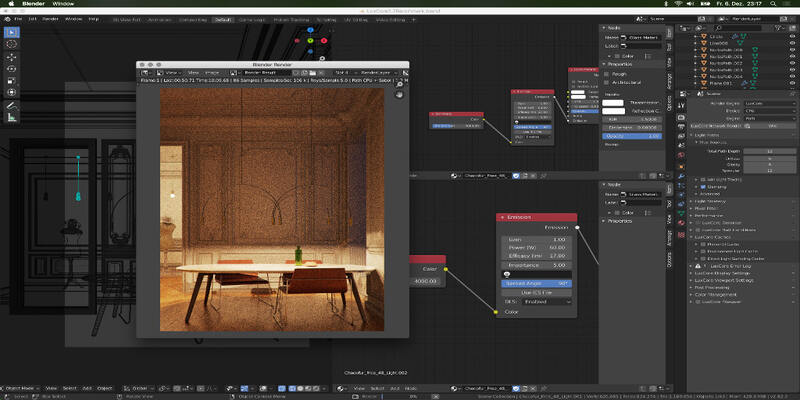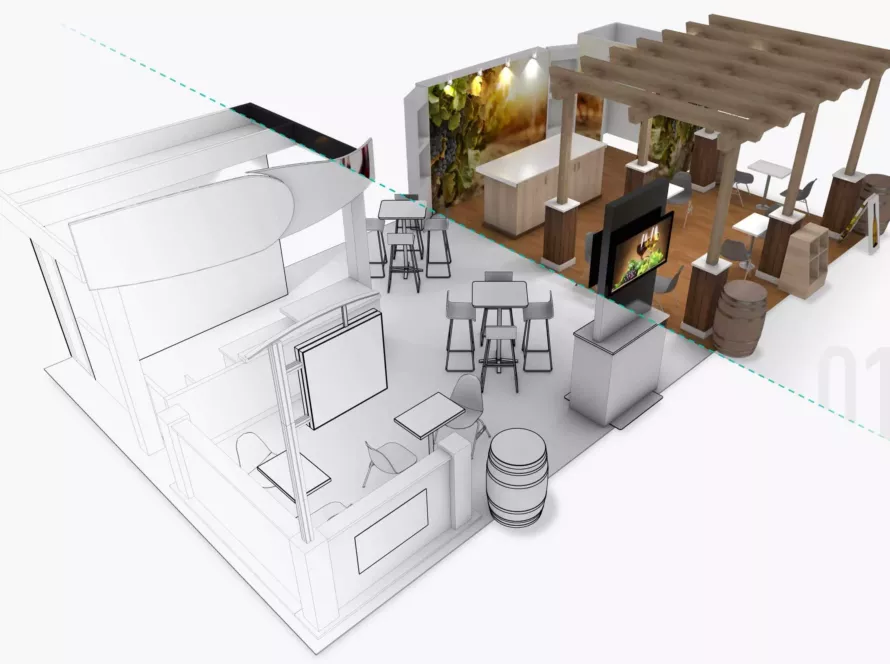Rendering tools are becoming more and more popular in the 3D printing industry. They allow users to create detailed models of objects, quickly and easily. However, as with any piece of software, there is always the potential for abuse. This is especially true when it comes to rendering tools, which can be used to maliciously attack other users’ files. In light of this, we wanted to introduce you to a new feature we’ve implemented on our rendering tool: reviews. Reviews will allow you to learn about the experience other users had with our tool before deciding whether or not to download and use it.
What are rendering tools?
A rendering tool is an application used to create a three-dimensional image of a scene. The application takes in a model or scene and outputs an image that can be viewed on a computer screen. Rendering tools are widely used in various fields such as architecture, engineering, gaming, and product design.
There are many different rendering tools available and the choice depends on the type of project that is being undertaken. Some of the more commonly used rendering tools include 3D Studio Max, Maya, and Cinema4D. Each offers its own set of features and benefits which can be useful in specific circumstances.

3D Studio Max is a popular software platform for creating 3D models and scenes. It offers a wide range of features including tools for animation, molding, shading, texturing, surface modeling, andrendering. 3D Studio Max has been used extensively by architects and engineers to create models for buildings and structures as well as illustrations for magazines and websites.
Maya is another popular platform for creating 3D models and scenes. It offers users extensive control over the geometry, materials, lighting, dynamics, render settings, deformations and simulation controls within the software environment. This makes Maya particularly suited for engineering projects such as CAD drawings or simulations.
Cinema4d is another popular platform for creating 3D models and scenes. It offers users advanced animation capabilities along with support for advanced lighting effects and physics simulations enabling it to simulate realistic movement within scenes. Cinema4d is particularly suited for creating product designs or video games.
What are their uses?
There are many different rendering tools available to 3D artists, each with its own unique set of features and uses. These tools can be used for a variety of purposes, including review and revision of models before printing or exporting them, checking the quality of renderings before sharing them online, and creating concept art or previsualization animations. Here are some of the most popular rendering tools and their specific uses:
Blender is a free, open source 3D animation rendering application that has been used by movie studios and video game developers worldwide for years. It is widely considered to be one of the most versatile and user-friendly 3D animation software packages available. Blender has many built-in features for reviewing models and animations, including a character editor, scene editor, rigging tools, particle systems, texturing capabilities, and more. It can also export rendered videos in various formats, including MP4, AVI, WMV, and MKV.
Renderosity is a website devoted to helping professional 3D artists increase their productivity by providing quality Renderosity renders of high-quality 3D content. The site offers detailed technical information on how to create renders using various software applications as well as tips on mastering specific techniques. Renderers uploaded to Renderosity can be used for personal use or shared with other artists for feedback or collaboration.
Mudbox is an award-winning 2D animation software package that also supports 3D modeling and rendering. It is designed for users who want to create professional 2D animation or 3D graphics. Mudbox offers a wide variety of features for creating characters, environments, and scenes, as well as tools for creating motion graphics and compositing effects. Mudbox can be used to render animations in a variety of formats, including MP4, AVI, and MKV.
3Dcoat is a free 3D rendering software package that was designed specifically for artists and engineers who need to produce high-quality renders of 3D models. It offers a wide range of features for creating detailed images, including advanced lighting and shading techniques, realistic materials, and a broad range of displacement mapping options. 3Dcoat can be used to render scenes in a variety of formats, including MP4, AVI, and MKV.
How to choose the best rendering tool for your needs
There are a number of rendering tools available on the market, and it can be difficult to decide which is the best for your needs. This article will outline some of the key factors to consider when choosing a rendering tool, and provide a review of three of the most popular options.

Software rendering engines are used to produce 3D images from 2D or 3D image files. They can be used to create static images or animations. The most popular software rendering engines are:
- GIMP: A free and open source program with support for many languages, GIMP is well known for its ability to edit photos and create graphics. It also has a powerful plugin system that makes it possible to extend its functionality.
- Maya: Maya is widely used for animation and product design. It has a comprehensive modeling and texturing toolkit, as well as support for motion graphics and compositing.
- Cinema4D: Cinema4D is an expensive but powerful program used by studios worldwide to create realistic 3D scenes and animations. It has extensive modifier capabilities, making it suitable for advanced productions.
How to render with a rendering tool
Render farm tools help studios to render larger scenes more quickly, and can help reviewers assess quality assurance. There are a few different rendering tools available, but the most popular ones are Redshift, Octane Render, and Luxrender.
Redshift is a cloud-based rendering tool that helps users to render large scenes quickly. It uses a data-parallel architecture which allows it to process large amounts of data more rapidly. Additionally, Redshift has support for multiple GPUs which allows users to improve rendering times by leveraging their hardware resources.

Octane Render is another commonly used rendering tool that helps studios to render high-quality images. It has a user-friendly interface which makes it easy for studios to use, and it also has support for multiple GPUs which allows users to improve rendering times by leveraging their hardware resources.
Luxrender is a specialized rendering tool that is designed for the review and analysis of images. It has a user-friendly interface which makes it easy for studios to use, and it also has support for image editing capabilities which allow reviewers to make changes to images before they are rendered.
How to improve render times with rendering tools
There are a variety of rendering tools that can help improve render times for your 3D graphics. Some common ones include the Google Earth Engine, Unity3D, and Unreal Engine. You can also use rendering engines like Blender or Maya to create 3D content.
One way to improve render times is to use lower resolution textures. This will reduce the number of calculations that need to be performed in order to generate the image. Additionally, you can cache rendered images in order to save on processing time.
You can also optimize your scene by disabling redundant objects and features. Disabling unnecessary objects will free up memory and processing time. Additionally, you can optimize your lighting and materials in order to reduce the number of computations that need to be performed.
Conclusion
Recently, there has been a surge in the use of rendering tools by graphic designers and web developers. In this article, we will take a look at some of the most popular rendering tools and provide you with an overview of their features. After reading this article, hopefully you will have a better understanding of what these tools can offer your workflow and be able to make an informed decision about which one is right for you.





